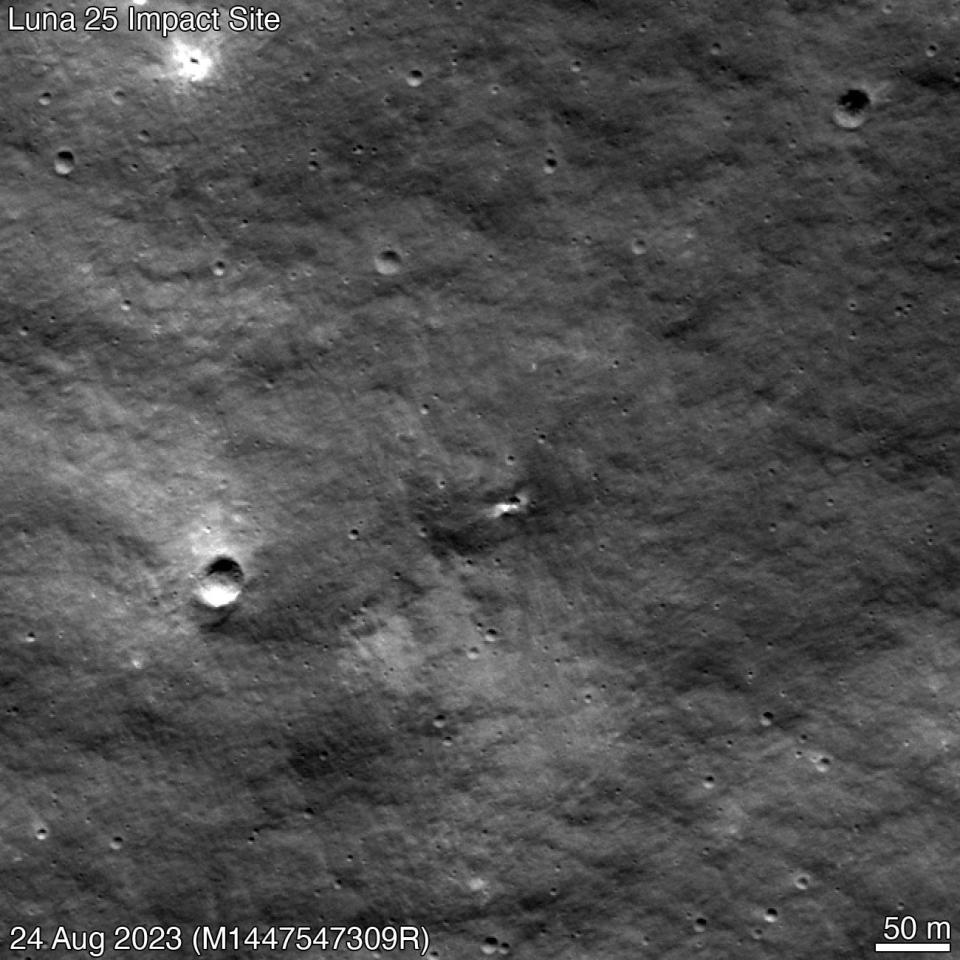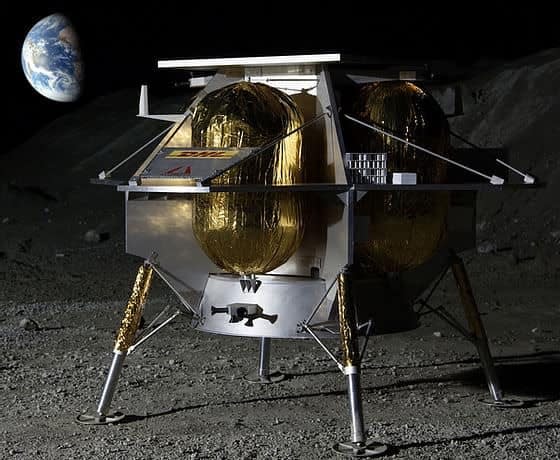Odysseus spacecraft attempts to land on moon 50 years after Apollo missions: What we know
From Florida to the moon? Godspeed, Odysseus!
The six-legged robotic spacecraft that's traveled more than 1 million kilometers (or more than 621,000 miles) since launching a day after Valentine's Day could potentially become the first American vehicle to land on the lunar surface since Apollo 17 in December 1972.
Intuitive Machines crews are targeting 5:30 p.m. EST Thursday, Feb. 22, to attempt to land Odysseus, their first Nova-C lunar lander, near the moon's south pole region. Here's what we know about the mission and its historical impact for the Space Coast of Florida and beyond.
What is Odysseus?
Intuitive Machines Odysseus lunar lander is a six-legged spacecraft. Similar in size and shape to the TARDIS time machine featured in "Doctor Who," the robotic lander soared off launch pad 39A at 1:05 a.m. EST Thursday, Feb. 15, hours after Valentine's Day ended, atop a SpaceX Falcon 9 rocket from Kennedy Space Center.
After liftoff, the rocket safely separated 48 minutes later, and the lander was on its own to begin its journey to the moon. Potential landing for the spacecraft is today, Thursday, Feb. 22.
Odysseus is the second private moon mission this year. Odysseus lander is expected to touch down in Malapert A, a crater situated around190 miles from the moon's south pole.
Bookmark this: Is there a launch today? Upcoming rocket launch schedule for SpaceX, NASA in Florida
When was the 'Odysseus lunar lander' launch from Florida?
At 1:05 a.m. EST Thursday, Feb. 15, a SpaceX Falcon 9 rocket launched the robotic spacecraft from Kennedy Space Center. The Nova-C moon lander, built by Intuitive Machines and named Odysseus, was carrying a suite of NASA scientific instruments, as well as commercial payloads.
This unmanned mission is critical for future human missions to the moon, with NASA hoping to send unmanned landers to the lunar surface for resupply and datacollection.
What is Intuitive Machines?
Intuitive Machines is a Houston-based company that developed the Odysseus moon lander. Its mission? "We open access to the moon for the progress of humanity."
Stephen Altemus, Kam Ghaffarian and Tim Crain founded the company in 2013. According to its site, Intuitive Machines is "completing its lunar program which will provide lunar surface access, lunar orbit delivery and communications at lunar distance."
Were there other private moon missions?

In August 2023, Russia launched its first moon mission in nearly 50 years, sending its Luna-25 lander to the moon. While Luna-25 did make it there, it smashed into the lunar surface upon arrival.
According to NASA, "NASA’s Lunar Reconnaissance Orbiter (LRO) spacecraft imaged a new crater on the moon’s surface that was likely the impact site of Russia’s Luna-25 mission. During its descent, Luna-25 experienced an anomaly that caused it to impact the surface of the Moon on Aug. 19 (2023)."

In January, Astrobotic's Peregrine robotic lander malfunctioned in space, never reached the lunar surface, and burned up in Earth's atmosphere on Jan. 18.
The rocket liftoff looked picture-perfect: United Launch Alliance's next-generation Vulcan soared off the pad in the Jan. 8 post-midnight darkness on its inaugural flight from Cape Canaveral Space Force Station. But up in space, the Vulcan's payload — Peregrine, the first American commercial lunar lander to launch on a mission to the moon — promptly developed a propellant leak, torpedoing its mission.
The mission aimed to deliver five NASA instruments to the moon's surface, to study the local environment.
Why are we going back to the moon?
Rather than targeting moon landings for political purposes, like during the 1960s and '70s, the U.S. seeks to establish a longterm human outpost on the moon, former NASA astronaut José Hernández said Feb. 1 during SpaceCom in Orlando. "Everything that we do on the moon, we're going to need to do on Mars," said Hernández, whose life story and 2009 flight aboard space shuttle Discovery on STS-128 were chronicled in the Amazon Studios movie “A Million Miles Away” starring Michael Peña.
Hernández, a former migrant farm worker, talked about the average distance from Earth to Mars measuring 588 times farther than the distance between Earth and the moon: "We've got to prove we're able to survive outside the Earth for long durations of time on the surface of the moon. Because on Mars, that's 140 million miles away. That's a big difference," Hernández said.
How can I watch Odysseus lunar lander land on the moon?
The USA TODAY Network's Space Team will link to NASA TV live landing coverage starting at 4:15 p.m. EST Thursday, Feb. 22. Odysseus is carrying a suite of six NASA scientific payloads via the agency's Commercial Lunar Payload Services initiative and Artemis campaign.
For the latest news from Cape Canaveral Space Force Station and NASA's Kennedy Space Center, visit floridatoday.com/space.
Contributing: Buzz60, Newsworthy
Rick Neale is a Space Reporter at FLORIDA TODAY (for more of his stories, click here.) Contact Neale at 321-242-3638 or rneale@floridatoday.com. Twitter/X: @RickNeale1
Sangalang is a lead digital producer for USA TODAY Network-Florida. Follow her on Twitter or Instagram at @byjensangalang. Support local journalism. Consider subscribing to a Florida newspaper.
This article originally appeared on Florida Today: Intuitive Machines Odysseus spacecraft: Will it land on the moon Feb. 22?

